The coming TSMC boom: Can it double sales by 2023?
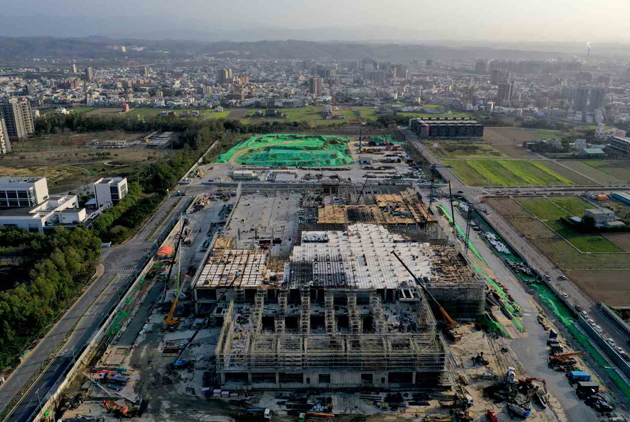
Source:Chien-Tong Wang
TSMC got its start 30 years ago with the help of Intel. Now its technology is ahead of Intel’s by 1.5 generations, and its 3nm technology could help the world’s biggest contract chipmaker double sales by 2023. How has TSMC become so successful?
Views
The coming TSMC boom: Can it double sales by 2023?
By Liang-rong Chen, Elaine HuangFrom CommonWealth Magazine (vol. 717 )
Many people may forget that TSMC’s first order came from Intel.
In 1988, Intel CEO Andrew Grove visited Taiwan to see the fledgling chipmaker that had just been founded the previous year. At the time, TSMC had but one 6-inch wafer production line handed over from Taiwan’s Industrial Technology Research Institute that made chips using a 3-micrometer (μm) process.
Before Intel took the plunge with the Taiwanese chipmaker, it raised 200 tricky problems over the course of a year, problems that TSMC engineers resolved one by one until TSMC finally received certification to produce some of Intel’s processors and chipsets.
TSMC founder Morris Chang told his people at the time that the process of making chips for Intel would “significantly improve TSMC’s engineering capabilities.”
 (Source: CommonWealth Magazine)
(Source: CommonWealth Magazine)
Three decades later, the roles have reversed. In 2018, TSMC successfully launched commercial production of the 7-nanometer process, ending Intel’s longstanding reign as the global leader in semiconductor technology.
Yet because Chang was close to Intel founders Robert Noyce and Gordon Earle Moore when he was young, and Intel was a TSMC customer from the beginning, he did not boast and was respectful when talking about the American company.
“[TSMC] is actually not directly in competition with them,” he explained in an interview in 2020, saying TSMC was only competing with Intel’s production department.
“We just want them to pass some business our way.”
According to the market research group IC Insights, Intel currently has the capacity to produce 880,000 8-inch wafers a month (when converting all wafer sizes into 8-inch wafers), just under a third of TSMC’s capacity. But because all of Intel’s capacity is devoted to its own CPUs, it only uses advanced processes to make its chips.
TSMC, on the other hand, has to meet a wide range of needs, from automotive electronic and power supply chips that use older 0.5μm process technology to newer products using the 5nm process. Of them, advanced processes of 28nm and below account for a third of TSMC’s capacity, roughly equal to Intel’s total capacity.
In other words, if Intel were to give up its manufacturing operation, TSMC would have to double its advanced process capacity to be able to handle it, but it would be a very lucrative opportunity.
According to TSMC financial statements, advanced processes accounted for 72 percent of the company’s revenue in 2020. Even if Intel only outsourced half of its needs, it would be enough to dramatically accelerate TSMC’s revenue growth in the next few years, and that day may not be far off.
At an investor conference on January 14, TSMC CFO Wendell Huang announced that capital expenditure could reach US$28 billion in 2021, far beyond analysts’ expectations and roughly double the company’s average capex in recent years. About 80 percent of that, Huang said, would go to advanced process technologies, including 3nm, 5nm and 7nm processes.
Was that because TSMC is anticipating big orders from Intel? Peppered by analysts for an answer, TSMC executives said they would not comment on specific customers or areas. But TSMC Chairman Mark Liu said, “I think our business has been driven traditionally – in the past few years by smartphones. Starting this year, HPC [high performance computing] has also jumped on the wagon.”
When asked for more details on the opportunities that exist in high-performance computing, TSMC CEO C.C. Wei said, “CPU, networking and AI accelerators will be the main growth areas in HPC applications.”
The mention of HPC and CPUs, Intel’s main product line, offered another hint that perhaps TSMC is anticipating that Intel will put less of an emphasis on manufacturing in the future.
In a research report that came out before the investor conference, brokerage firm Bernstein raised its target price for TSMC from NT$425 to NT$800 and predicted that Intel would use TSMC’s most advanced 3nm process to produce its CPUs two years down the road.
Thus, by 2023, 40 percent of the world’s CPUs could be manufactured in TSMC’s foundry in the Southern Taiwan Science Park, resulting in a doubling of TSMC’s revenue in just four years, surpassing Intel.
The report also said TSMC would do fine even if Intel does not outsource production because AMD would likely gain greater market share. In either case, Bernstein said, TSMC would come out a winner.
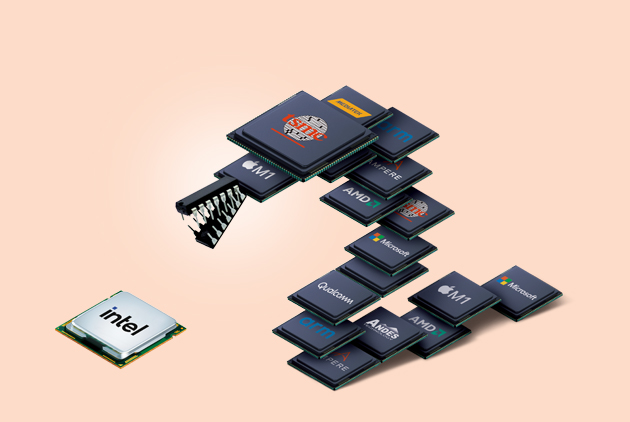 (Source: CommonWealth Magazine)
(Source: CommonWealth Magazine)
Also giving Bernstein’s analyst considerable optimism was the “TSMC Grand Alliance” that TSMC founder Chang loved to talk about.
This massive coalition, connecting IC design, EDA design and silicon intellectual property companies such as ARM, AMD, Appel, MediaTek, Qualcomm and Microsoft to the TSMC manufacturing platform has led several IDM (integrated device manufacturers) to abandon their manufacturing businesses and become TSMC customers or fade into the dustbin of history.
Intel’s Real Nemesis: MacBook
Of particular concern to Intel are the actions of major customer Apple. It is planning to switch all of the CPUs used in its computer products to processors developed in house in the next two years.

(Source: Getty Images)
The first Apple-designed processor already hit the market at the end of last year. Called the M1, it was produced using TSMC’s 5nm technology and installed in three Apple entry-level laptop and desktop computers. Apple said its performance is 3.5 times that of the previous generation of Intel CPUs.
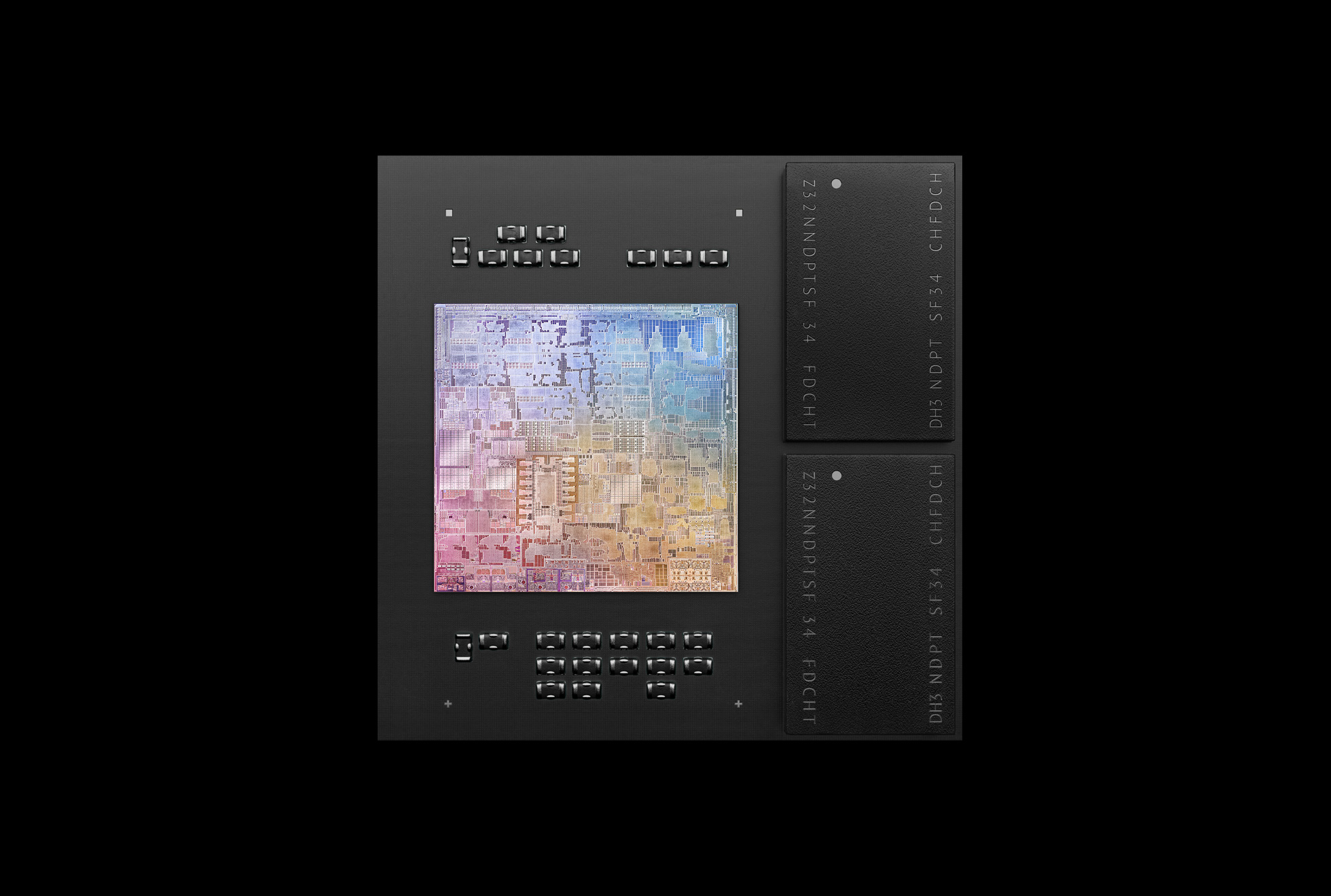 (Source: Apple)
(Source: Apple)
The new products demonstrated that combining the Arm architecture CPU that is widely used in mobile phones with TSMC’s most advanced manufacturing processes can outpace Intel’s full range of x86 processors.
Microsoft was also said at the end of last year to be designing its own Arm-based processor chips for some of its Surface PCs, and even before Apple came out with the M1, Amazon, the world’s biggest cloud services provider, had designed its own CPU for its servers. Amazon’s processor also used the Arm architecture.
In other words, the world’s first-, second-, and third-largest tech companies by market capitalization have surrendered to the “TSMC + Arm” alliance and are ganging up against Intel.
What industry observers most want to know is whether Intel will also succumb to these pressures and outsource some or all of its production to TSMC.
C.J. Hsieh, the general manager of Intel Innovation Technologies who is responsible for foundries and sourcing and operations management in Taiwan and China, said Intel’s outsourcing policy has not changed and that it would increase its use of outside contractors.
There are several factors contributing to this dominance exhibited by TSMC.
Key to victory #1: Arm can supplant x86 architecture
AMD took the leading role at the CES computer showcase this January in the U.S. For the first time ever, ASUS and Lenovo switched to AMD processors made with TSMC’s 7nm production process for all of their gaming laptops.
One anonymous laptop manufacturer executive related that Arm architecture laptops could take center stage at next year’s CES show.
Naturally, a major key is Microsoft’s attitude change.
One unnamed executive from a major notebook manufacturer relates that in the second half of 2019, Microsoft had made clear its intention to divide up the CPU architecture. A fissure thus emerged in the Wintel Alliance (Windows + Intel) that had dominated the global computer industry for years, and this was no small event.
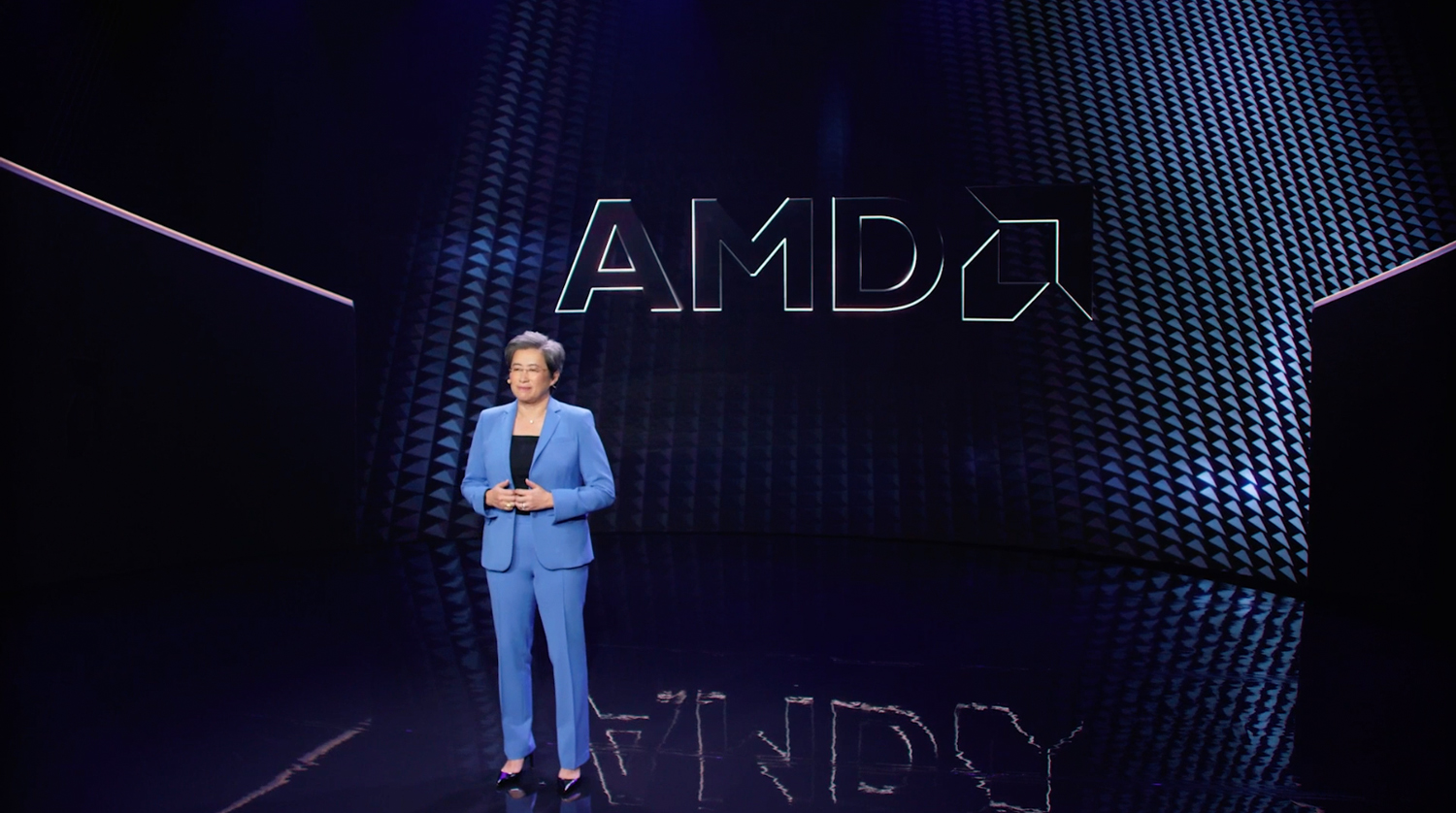 (Source: CES)
(Source: CES)
The question of whether Arm architecture notebook computers can hold their own against Intel’s x86 notebooks, however, is missing the final piece of the puzzle - a high-performance universal Arm processor - one that would enable the likes of Acer and ASUS to develop new high-performance, energy-efficient notebooks like those of Apple.
In the effort to boost its Arm processor design capabilities, Qualcomm recently spent US$1.4 billion to acquire semiconductor startup Nuvia, some of whose founding team members contributed to iPhone processor design. One analyst believes that, with Microsoft’s full support, the rise of Arm notebooks is only a matter of time.
Key to victory #2: 3nm production capacity battle royale
The final battle between the TSMC-aligned Apple, AMD, and Arm and Intel could take place in relation to the 3nm production process that TSMC projects will reach full production capacity by the second half of next year. This would correspond with the fourth through sixth phases slated for TSMC’s No. 18 plant in the Tainan Science Park.
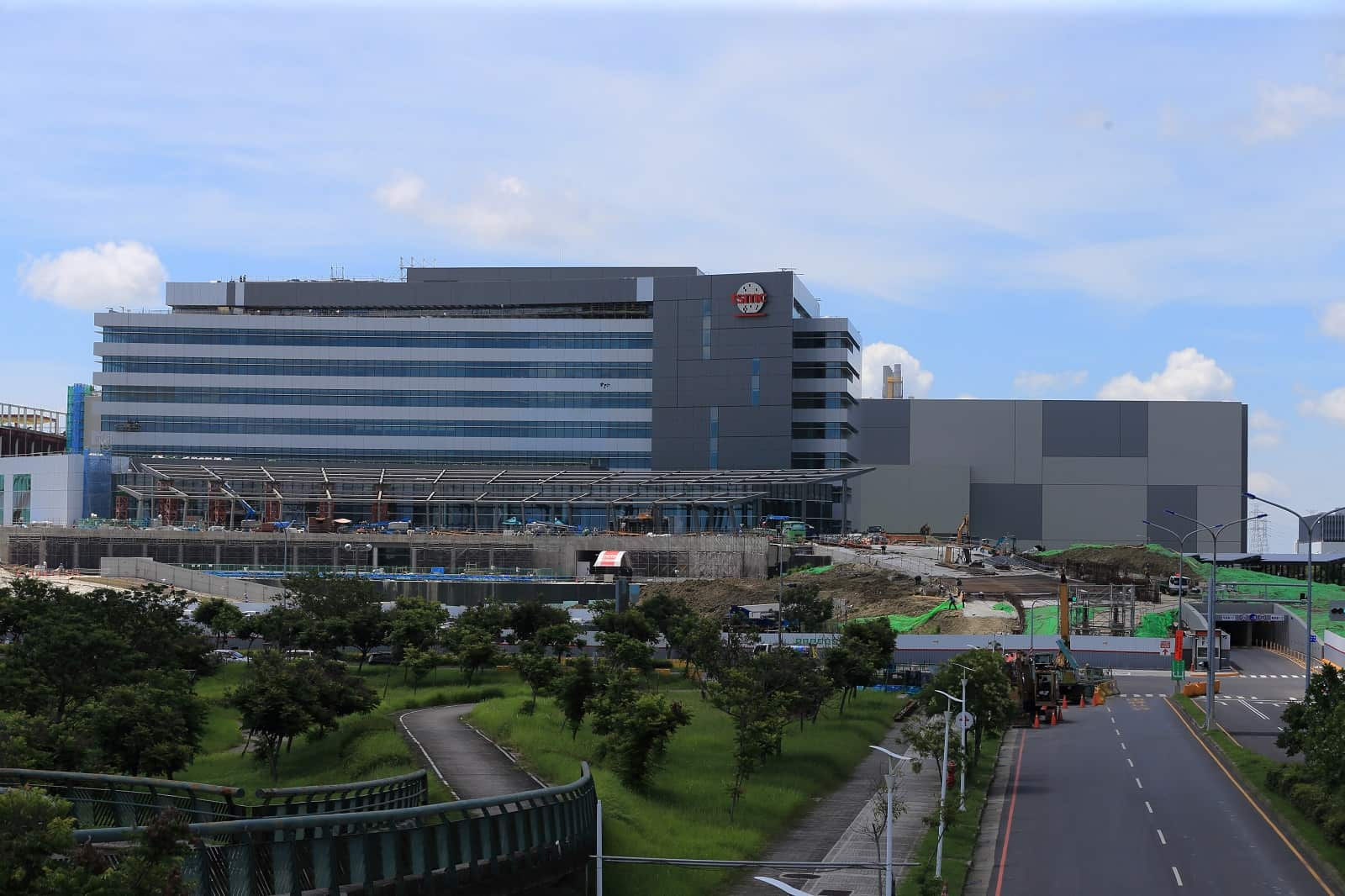 TSMC’s No. 18 plant in the Tainan Science Park. (Source: Chien-Tong Wang)
TSMC’s No. 18 plant in the Tainan Science Park. (Source: Chien-Tong Wang)
This could prove to be the most important production process iteration in TSMC’s history.
AllianceBernstein relates that TSMC’s astonishing capital outlay this year is chiefly focused on 3nm wafers. According to UBS Securities, ASML Holding is set to ship 40 extreme ultraviolet (EUV) lithography machines this year, 18 of which will go to TSMC.
In line with established precedent, Apple will get first dibs. However, what is unusual this time, as revealed to CommonWealth by different sources, is that the world’s first, most advanced 3nm chips will be installed in Apple’s Macbook computers, not iPhones.
Key to victory #3: advanced assembly critical
The world’s most expensive packaging and testing plant will be established in Miaoli.
Early this year Dr. Y.J. Mii, senior vice president of research and development, took the helm of TSMC’s advanced assembly operations. A veteran of IBM, Mii ranked second in seniority among TSMC’s star-studded research and development team next to Dr. Wei-Jen Lo. Dr. Lo oversaw the development of TSMC’s 5nm technology, which recently reached mass production.
“Old Mii was in charge at the most cutting edge. What does putting him on this (assembly) mean?” wondered one packaging and testing executive. “This indicates a change in the wind.”
For years, voices throughout all kinds of sectors predicted that the limits described by Moore’s law were getting close. “After long pauses at 3nm and 2nm, going forward, it’s going to take advanced assembly technology,” says the major manufacturer supervisor.
In his address at Semicon Taiwan a few months ago, TSMC Chairman Mark Liu asserted, “If you’re worried about the progress of numbers like 7nm and 5nm, you shouldn’t be.” Elaborating, he said, “The future technological development of semiconductors must break free of the nanometer process nodes narrative.”
Liu noted that TSMC’s most advanced assembly technology, SoIC (Systems on Integrated Chips), employs wafer fab production techniques in packaging, and that it continues to shrink in size and enhance performance. Limited production is expected sometime in 2022.
TSMC’s new sixth packaging and testing facility, slated for completion and testing this year with total investment reaching NT$300 billion, will be the world’s most expensive advanced packaging and testing plant.
If everything goes smoothly, AllianceBernstein predicts that TSMC will make 40 percent of the world’s computer processors by 2023, including some from Intel.
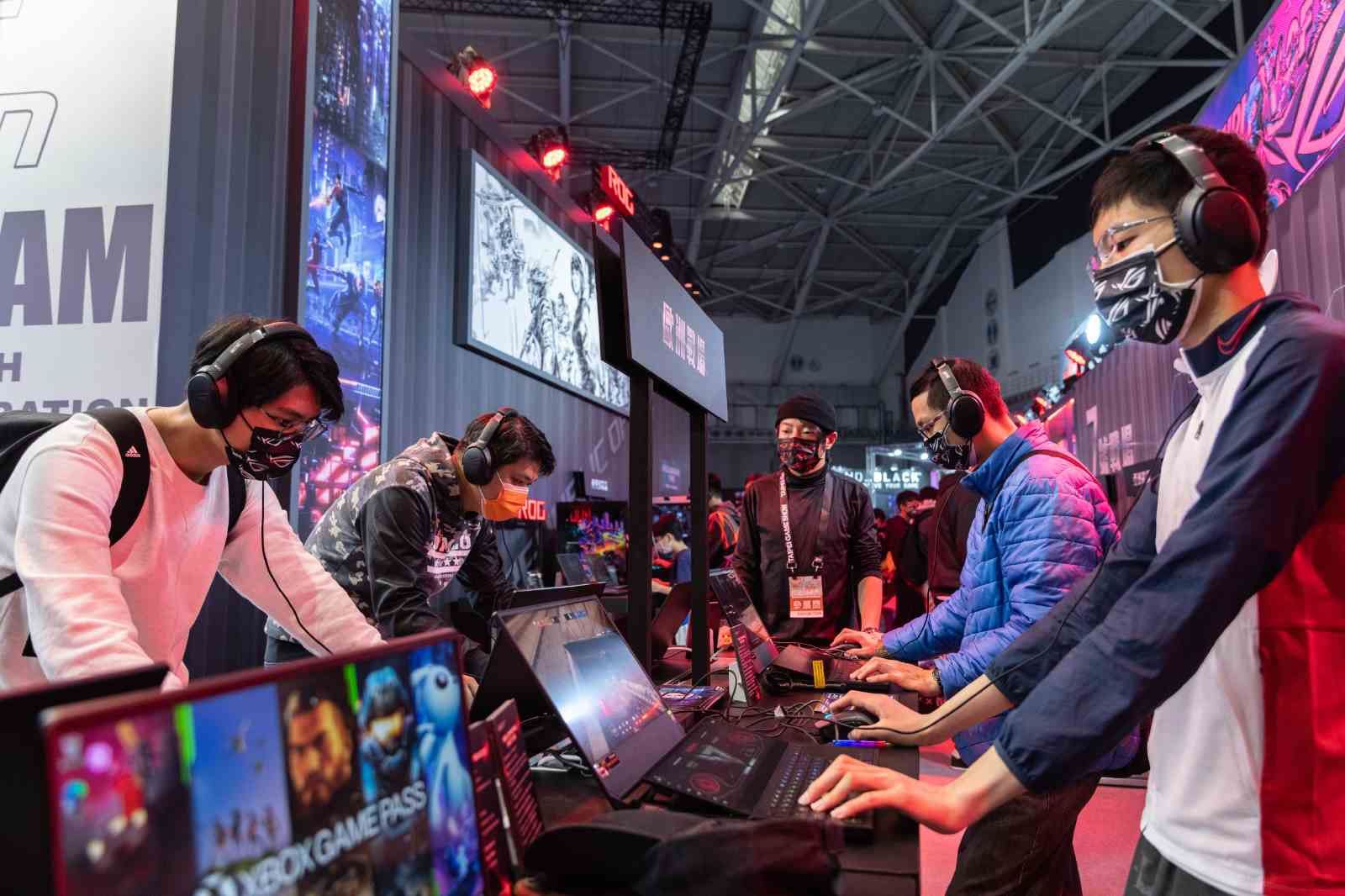
(Source: Pei-Yin Hsieh)
This will be an earth-shaking occasion for TSMC, Taiwan, and even the global tech industry.
Morris Chang’s vision of Intel handing over “production business” is on its way to coming true.
With a “Made in USA” national strategy, can TSMC keep winning?
The past year has seen an unprecedented shortage of chips for automotive use, becoming a sticky issue for the incoming Biden administration, and once again raising calls for the semiconductor sector to return to “made in the USA.”
On February 11, key figures associated with major TSMC customers, including AMD president and CEO Lisa Su, Qualcomm CEO Steve Mollenkopf, and former Intel CEO Bob Swan, issued an open letter in their capacity as board members of the Semiconductor Industry Association (SIA), calling on the Biden administration to step up financial support of U.S.-based semiconductor manufacturing as part of its economic recovery program.
Whether Intel can further outsource production to TSMC under such a political climate may not be a simple question of product competitiveness, and in fact could take on greater national strategic importance, and even become drawn into regional political tussles.
Some commentators have even called for Apple to leverage its sizable influence to demand that TSMC manufacture its processors in the United States. And whispers abound concerning negotiations between TSMC and Intel to invest together on manufacturing facilities in the U.S.
How the TSMC alliance negotiates the tightrope of regional politics will surely be the next issue going forward.
Have you read?
♦ Lack of charger with iPhone 12 drives TSMC to outsourcing
♦ Taiwan Needs More than TSMC
♦ In Search of the Next TSMC
Translated by Luke Sabatier, David Toman
Edited by TC Lin
Uploaded by Penny Chiang






